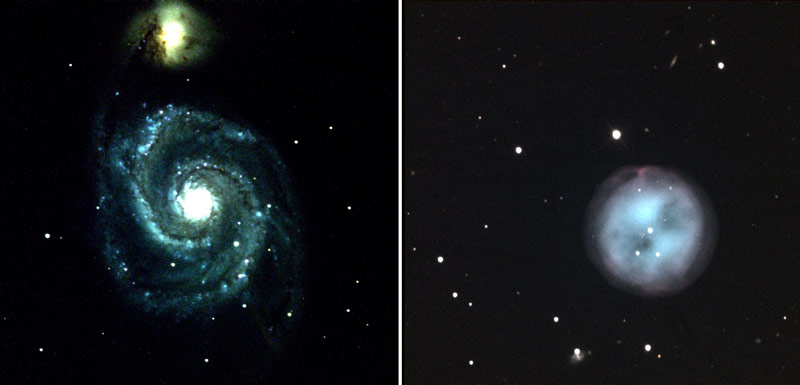
New robotic telescope lets USask students do astronomy from home
The new telescope can be controlled by students and researchers from anywhere in the world
By Chris Putnam
A newly installed robotic telescope will give a clear view of Saskatchewan’s night sky to University of Saskatchewan (USask) students and researchers around the world.
The telescope was installed this spring at the Sleaford Observatory east of Saskatoon by the university’s Department of Physics and Engineering Physics. Part of an international astronomy network called Skynet, the telescope can be remotely controlled from any computer connected to the internet.
“It’s definitely going to increase our capabilities. It’ll be so useful for classes and for research,” said Dr. Daryl Janzen (PhD), an astronomy lecturer in the College of Arts and Science.
Janzen put the finishing touches on the telescope just in time for students eager to study astronomy this spring. Astronomy classes, like all USask spring and summer classes, are being offered remotely due to the COVID-19 pandemic.
“We’ll be able to do astronomy remotely throughout the summer, which is serendipitous because now that’s the only way we’d be able to do astronomy,” said Janzen. “It’s all of a sudden a necessity rather than a luxury.”
Even after in-person classes resume at USask, the telescope will open up new possibilities for astronomy students. Its 16-inch diameter makes it larger and sharper than most of the telescopes on campus, and its location at the Sleaford Observatory—50 kilometres from major sources of light pollution—gives it a clearer view of the sky.
The instrument’s user-friendly controls will enable first-year students to complete tasks that once challenged senior astronomy students, said Janzen.
“It’s fully automated. All of the control is done through software. The students just log in through a browser and they schedule observations by saying where in the sky they want to observe, and with what frequency. If we get a cloudless night, then the observatory opens up and the telescope moves around the sky all on its own collecting the data, and they can follow up and do analysis on that.”
The robotic telescope will breathe new life into the Sleaford Observatory, as well. Purchased in 1997 by USask and the Royal Astronomical Society of Canada, the observatory has seen little use by the university in recent years because of its distance from Saskatoon, said Janzen.
With the robotic telescope, the Sleaford Observatory will be used regularly: not just by USask students, but by astronomers around the world.
Joining Skynet
Named after the evil artificial intelligence of the Terminator films—only much friendlier—Skynet is one of the world’s largest telescope networks.
Professional and amateur astronomers across the planet can book time to use the telescopes for learning or collaborating on research.

The new robotic telescope near Saskatoon was brought in from an observatory in Chile, where it was one of six identical telescopes in a cluster owned by the University of North Carolina.
The project’s director realized more could be done with the Chilean telescopes if they were moved to different vantage points around the Earth. Janzen arranged to have one sent to Saskatchewan.
With $60,000 in funding from the College of Arts and Science Dean’s Priority Fund and the Department of Physics and Engineering Physics—along with help from engineers and machinists across campus—the telescope was upgraded and installed at the Sleaford Observatory.
Janzen’s students had already been using other Skynet telescopes in USask astronomy courses, but the local telescope will allow them much more time to observe.
“Having a telescope of our own on the network, where we have fairly unrestricted access to it, is going to mean that we can do lots of really interesting work with students and join in on interesting international collaborations as well,” said Janzen.
When the telescope isn’t being used by USask students, it will be available to researchers at other locations.
One of the key research projects involving the Sleaford telescope will be the study of kilonovae: mergers of neutron stars that emit strong gravitational waves along with bright light. When a kilonova is detected by its gravitational waves, telescopes around the world race to find the new source of light in the sky.
“There was a neutron star merger in August of 2017, and Skynet was the second group in the world that independently detected that. And so they’re wanting to build capacity to be able to be the first,” said Janzen.
USask students will use the robotic telescope in the spring section of Astronomy 104, which started on May 6.
Read more about the telescope on the USask Observatory blog.

